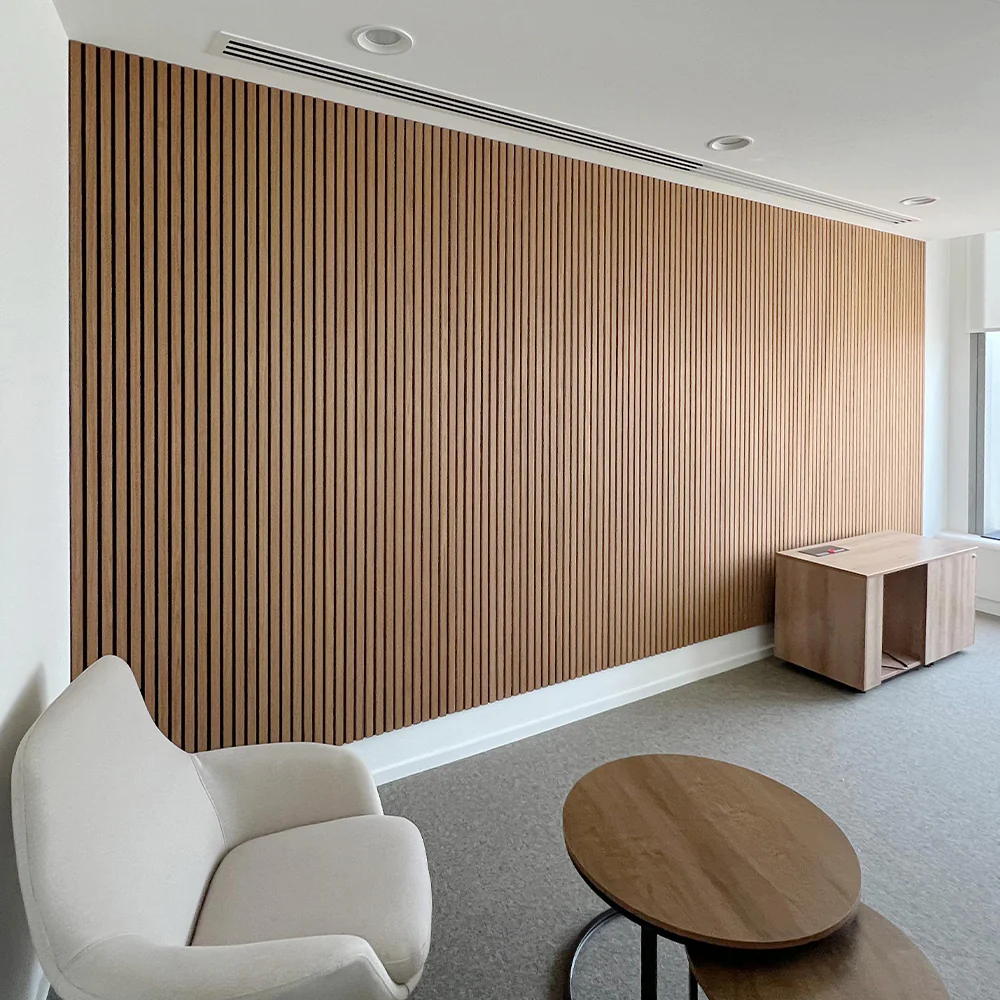Wood panelling for interior walls has become a popular choice for homeowners and designers looking to add warmth, texture, and elegance to their living spaces. Whether you want to create a rustic cabin vibe, a sleek modern look, or a classic traditional atmosphere, wood panelling offers versatile options that cater to every style and budget. In this ultimate guide by Slat Solution, we will explore everything you need to know about wood panelling for interior walls from types and benefits to installation tips and maintenance.
What is Wood Panelling for Interior Walls?
Wood panelling for interior walls refers to the process of attaching wooden boards, planks, or panels onto a wall surface to create a decorative or functional layer. This technique has been used for centuries, providing both insulation and aesthetic appeal. Modern wood panelling is available in a wide range of materials, finishes, and installation methods, allowing homeowners to customize their spaces effortlessly.
Benefits of Wood Panelling for Interior Walls
Adds Warmth and Character
One of the most compelling reasons to choose wood panelling for interior walls is its ability to add natural warmth and character to any room. Unlike painted walls, wood brings in rich textures and tones that make a space feel inviting and cozy.
Enhances Insulation and Acoustics
Wood panelling helps improve the insulation of walls, keeping rooms warmer in the winter and cooler in the summer. It also absorbs sound, reducing echoes and improving the overall acoustics of your home or office.
Increases Property Value
Quality wood panelling can increase the value of your property by providing a timeless design feature that appeals to potential buyers. It’s seen as a premium finish that can set your home apart in a competitive market.
Versatile Design Options
Whether you prefer smooth, flat panels or intricate carved details, wood panelling offers a range of design possibilities. You can stain, paint, or leave the wood natural, creating styles from rustic to contemporary.
Types of Wood Panelling for Interior Walls
Tongue and Groove Panelling
Tongue and groove panels fit together seamlessly, creating a smooth and uniform surface. This type is popular for its ease of installation and durability.
Shiplap Panelling
Shiplap features boards that overlap slightly, creating a distinctive shadow line between panels. It’s perfect for achieving a farmhouse or coastal look.
Raised Panel Panelling
Raised paneling adds a classic, formal appearance with decorative frames around recessed center panels. It is often used in traditional or colonial-style interiors.
Beadboard Panelling
Beadboard consists of narrow vertical planks with a small, rounded ridge or “bead” between each plank. It’s a charming choice for cottage-style or casual rooms.
Slat or Batten Panelling
This style uses narrow strips (slats or battens) spaced evenly apart, often installed over a flat panel or drywall. It creates a modern, textured effect and is great for accent walls.
Choosing the Right Wood for Panelling
Hardwood vs. Softwood
Hardwoods like oak, maple, and walnut are durable and have rich grains, making them ideal for high-traffic areas. Softwoods such as pine and cedar are more affordable and easier to work with but may dent or scratch more easily.
Engineered Wood
Engineered wood panelling consists of a real wood veneer over a plywood or MDF core. This option provides stability, resistance to warping, and a more budget-friendly price.
Reclaimed Wood
For an eco-friendly and unique look, reclaimed wood panelling uses salvaged wood from old barns, factories, or warehouses. It adds rustic charm and sustainability to your design.
How to Prepare Walls for Wood Panelling
Clean and Repair the Surface
Before installation, ensure the wall surface is clean, dry, and free of any damage. Patch any holes or cracks and sand down rough spots.
Measure and Plan
Accurate measurements are crucial for wood panelling. Plan the layout to avoid awkward cuts and ensure symmetry, especially if the panelling covers the entire wall.
Install a Moisture Barrier (if needed)
In areas prone to moisture, such as bathrooms or basements, a moisture barrier may be necessary to prevent mold and wood damage.
Installation Tips for Wood Panelling for Interior Walls
Use the Right Tools and Materials
Invest in quality nails, screws, adhesives, and a level to achieve a professional finish. A nail gun can speed up the process significantly.
Start from the Bottom
Begin installation at the base of the wall and work upward to ensure panels align properly and stay straight.
Leave Expansion Gaps
Wood expands and contracts with temperature and humidity changes. Leave small gaps around edges and between panels if recommended by the manufacturer.
Finish with Trim and Molding
Adding baseboards, crown molding, or chair rails enhances the look of your wood panelling and conceals any gaps or uneven edges.
Maintenance of Wood Panelling for Interior Walls
Regular Dusting and Cleaning
Dust wood panels regularly with a soft cloth or vacuum using a brush attachment. Clean with mild soap and water, avoiding excess moisture.
Protect from Scratches and Dents
Use felt pads on furniture and avoid sharp objects near the panelling to maintain its pristine condition.
Refinish When Needed
Over time, wood panelling may require sanding and refinishing to restore its original beauty. Use wood stains, oils, or varnishes suitable for interior wood surfaces.
Popular Interior Spaces for Wood Panelling
Living Rooms
Wood panelling creates a warm and inviting atmosphere, perfect for relaxing or entertaining guests.
Bedrooms
Add a cozy and intimate feel by installing wood panelling behind the bed or on a feature wall.
Kitchens
Wood panelling can be used on walls or as backsplashes to introduce texture and natural elements into the kitchen.
Offices and Libraries
Elevate workspaces with wood panelling that offers a sophisticated and professional ambiance.
Hallways and Entryways
Make a strong first impression with wood panelling that adds interest to transitional spaces.
Conclusion
Wood panelling for interior walls is a timeless and versatile design choice that enhances both the beauty and functionality of any room. From the variety of styles and wood types to practical installation and maintenance tips, this guide from Slat Solution has covered everything you need to know to make an informed decision. By choosing wood panelling for your interior walls, you are investing in a feature that combines elegance, durability, and comfort. Whether you opt for rustic reclaimed wood or sleek modern slats, your interior will benefit from the warmth and character that only wood panelling can provide.



